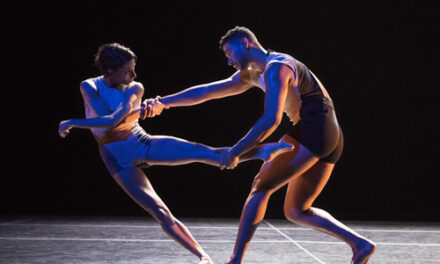The fine musicians of the Miró String Quartet have become frequent and welcome visitors to the state’s best chamber music venues. They were scheduled to open their concert in Watson Chamber Music Hall, North Carolina School of the Arts with Haydn’s Quartet in F minor, Op. 20, No. 5 (H.III.35). Second violinist Sandy Yamamoto, who announced the change to Beethoven’s Quartet in C minor, Op. 18, No. 4, said the evening was a sort of “homecoming” for her. She had completed her high school at the School of the Arts. One of the concerts that most influenced her was one by the Tokyo String Quartet in Stevens Center featuring the same Beethoven piece. An old Dover Lp of this work performed by the Lenox String Quartet introduced the world of chamber music to this critic three decades ago.
In the classic movie All About Eve, Bette Davis as Margo Channing says “Fasten your seat belts, it’s going a bumpy ride.” That admonition might have applied to the intense performance the Miró players gave of the Beethoven. Perfect ensemble and impeccable intonation are givens for any of their concerts. What left the listener open-mouthed with wonder was the breakneck speed at which they played the fast movements without losing any clarity of articulation or producing a smudged pitch. While I would not want always to hear the F minor interpreted this way, this performance was certainly exciting.
Violist John Largess introduced Shostakovich’s Piano Quintet in G minor, Op. 57, calling it a “‘sixth’ quartet that got out of hand.” The composer was trying to write a sixth quartet but “couldn’t keep himself out of it,” adding a piano part for himself. In the course of the five movements, not only are the strings set against the piano but different pairings of strings are probed. The clear textures of the slow opening Lento is followed by the complex interweaving of Fugue elements. The subject sounds like a sad Russian folksong. The fiery Scherzo is sassy with humorous dissonances. The full range of instrumental timbre is explored in the Intermezzo. The finale has some of the lightest and most cheerful music Shostakovich ever penned. With the piano lid fully up, NCSA faculty pianist Allison Gagnon balanced perfectly with the strings. Her palette of color and dynamics was amazing as she kept in step with every twist and turn of the strings. The Miró met every one of the composer’s challenges. This performance was so good that there was dead silence at its conclusion before the audience applauded passionately.
It was refreshing to end the evening with the dances and melodies of Dvorák’s Quartet in A-flat, Op. 105. His “American” Quartet, Op. 96, is programmed too often, so hearing one of the two late string quartets was a special treat. Themes are weaved imaginatively throughout, and the second movement is one of the Czech composer’s finest scherzos, a furiant filled with rhythmic verve. The Miró players struck a fine balance in their choice of tempos; the fast movements weren’t rushed and the slow movements weren’t allowed to cross the line into sentimentality.











